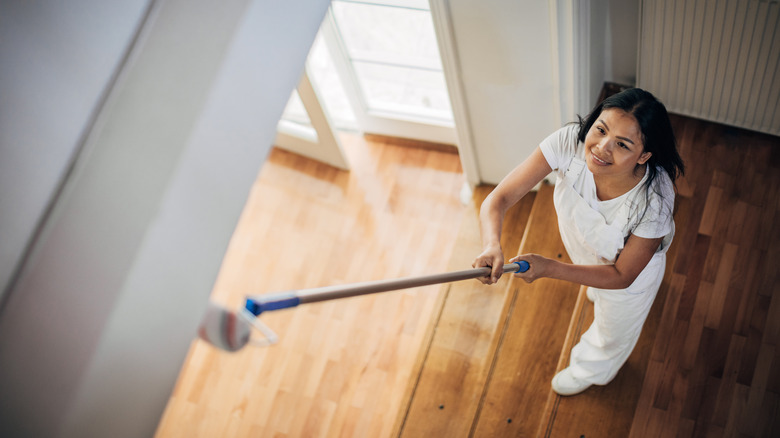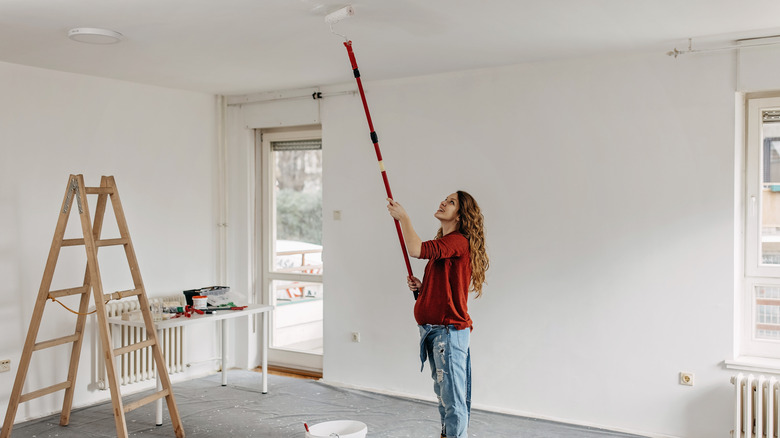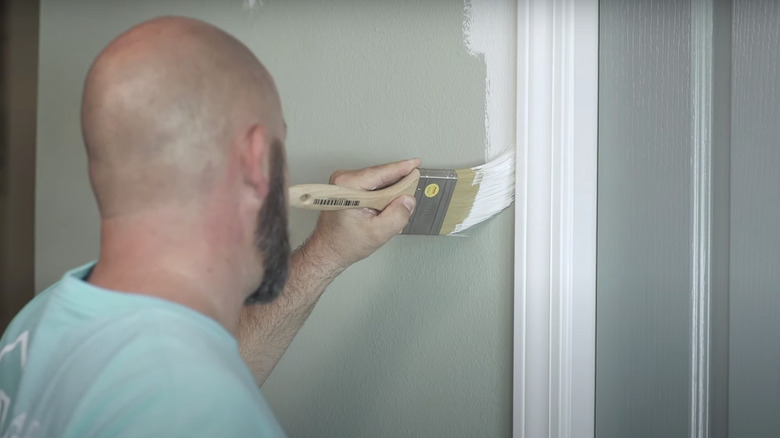What Do You Paint First - The Ceiling Or The Walls?
As you prepare to tackle your latest painting project, measuring your space and stocking up on supplies, you might think you can overlook your ceiling. However, once you apply a fresh coat of paint to your walls, you'll quickly notice the difference above you. This is why your ceiling should always be included whenever you're considering painting a room. But the question remains — which should you paint first? Well, with the way that gravity works, we recommend starting with your ceiling. This means you'll need to make sure to have plenty of supplies prepared for the surface above you.
You might consider skipping your ceiling, but once you apply a fresh color to your walls, you'll notice that your ceiling looks dull and faded in comparison. It may even take on a yellow hue over time. By painting your ceiling first, you'll create a unified, seamless space that feels fresh and new.
Prevent paint splatter
The first step in painting any room is to tackle the ceiling. This comes down to gravity. As you paint, you'll find some overspray affixing itself to your walls, dripping down. It's basically unavoidable with ceilings, but if you paint them first, you can quickly conceal any issues once it's time to paint your walls. You may also find that ceilings are trickier to paint. So, save yourself from frustration by focusing on this area first. This way, there's less need to be meticulous, so you can focus on getting the job done quickly and correctly.
After you complete your ceilings, you'll want to let them thoroughly dry before painting your walls. Two hours in between coats of paint is the ideal wait time. If you paint too soon, your wall paint may bleed into your ceiling paint, so the longer you wait, the better. Should you find yourself pressed for time, you can begin painting your walls after an hour, as long as your ceiling paint is dry to the touch.
Transition from ceiling to walls easily
If you're hoping to paint your ceiling first and wait a while before painting your walls, you can use painter's tape to protect the surrounding areas. Taping a room before painting might seem like a challenging task, but it's easier than it seems. It's a necessary step as it prevents roller marks on your walls. If you're not repainting crown moulding, remember to tape it off as well. Once you've finished painting your ceiling, your walls will be ready for a fresh coat of paint.
After your ceiling is painted and dry, you can tackle your walls. However, be mindful of your freshly painted ceiling, taking extra care not to get any wall paint on it. The best way to avoid painting your ceiling is with the cut-in method. Using your paintbrush and holding it like a pencil, dip it in your paint and start painting your walls roughly 1 inch away from your ceiling. Your brush should be parallel to the ceiling. Use small, horizontal strokes until you've cut in around your entire ceiling. This helpful method provides clean lines time and time again.


